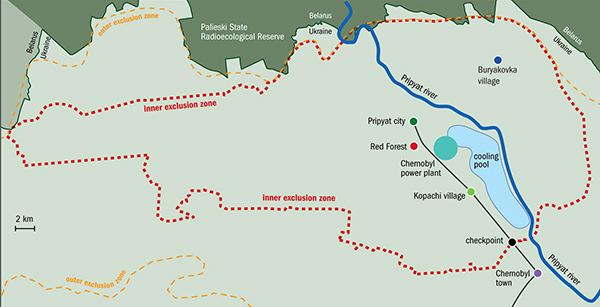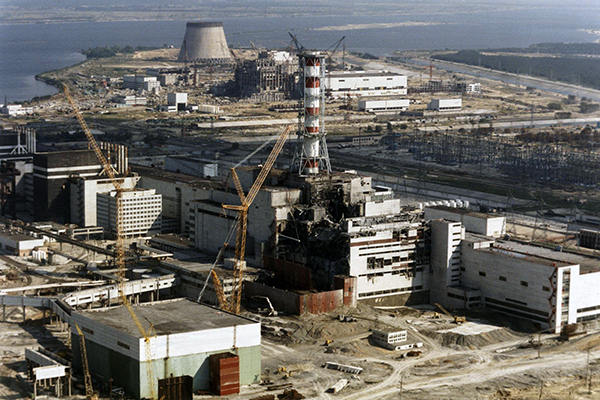On the first day of Russia’s invasion of Ukraine, its military forces overran the Chernobyl Nuclear Power Plant (ChNPP) and secured the site. The abandoned town of Chernobyl in northern Ukraine is just 10 miles from Ukraine’s border with Belarus and is just 130 kilometres from Ukraine’s capital.
Chernobyl has no military significance but it is one of the fastest land routes for invading forces. It is close to the border and also has a 2,600 square kilometre ‘exclusion zone’. The route via Chernobyl is one of four ‘axes’ Russian forces have used to invade Ukraine. The others were a second vector from Belarus, an advance south into the Ukrainian city of Kharkiv and a push north out of Russian-controlled Crimea to the city of Kherson.
Nevertheless, the advance through Chernobyl brought back the memories of the disaster that occurred on 26 April 1986 at Reactor No 4 in the ChNPP, near the city of Pripyat in present-day Ukraine. It is considered the worst nuclear disaster in history. The explosion led to the release of radioactive isotopes in the environment and most of the radioactive dust settled in the forest in the vicinity of the reactor. With the sacrifices and valiant efforts of the liquidators, the radioactivity settled down. The reactor core was covered, the top soil in the nearby region removed and replaced, and exclusion zone established and disposal of the radioactive waste was carried out.
The most astonishing part for the dosimetrist who ventured into Reactor Complex 4 was to find that the core of the reactor was empty, except for the inverted upper biological shield (Elena), ruptured fuel channels and the graphite blocks strewn due to the force of the explosion. Upon venturing further into the complex, it was discovered that the lava of nuclear fuel had melted down to the basement levels and formed a solid mass known as the Elephant’s Foot. Even after 35 years, the inside of Reactor No 4 main hall, turbine hall and the basement are highly radioactive.


The New Safe Confinement put in place in 2016 has drastically reduced the background radiation levels in the area. However, disposed off equipment, vehicles, clothing (firemen clothes in the basement of the Pripyat Hospital), the forest and the soil in the area are still radioactive and not safe to handle without adequate protection. Danger of wildfire, which has the potential to release some of the radioactive dust in the atmosphere, is always present. Radioactive dust contains alpha emitters, which if ingested/inhaled can cause serious health problems.
In the field of nuclear energy, safety is of paramount importance. Operational guidelines for a nuclear reactor are fairly comprehensive covering all possible contingencies. Several mechanisms are put in place to ensure safety. Redundancy is the key for ensuring safety. There are no safety mechanisms for the leftovers of the Reactor No 4; the only way to lower the radiation levels is by shielding. The first and the second structure are important for containing the exposed core. The structures may be compromised in the event of a war or an armed conflict.
The strategic location of ChNPP makes it a dangerously attractive choice for a well defended offensive position during an armed conflict. Military units and assets stationed would be considerably safer as targeting the area would risk causing another fallout. Bombardment of the area would expose the buried radioactive waste/debris which would be an undesirable outcome. Although the Reactor Nos 1, 2 and 3 have been decommissioned, many hotspots of radioactivity remain throughout the area. Risk of Cesium-137 dispersion might rise if any military action were to occur. Apart from this, the location of the NPP facilitates troop movement and the ability to oversee operations in that region.
All parties involved must ensure the radiation levels are kept in check. Movement of heavy vehicles should be carefully planned so as not to cause any sort of contamination. Periodic checks should be implemented and the standard operating procedures for monitoring of dosage should be carried out.













